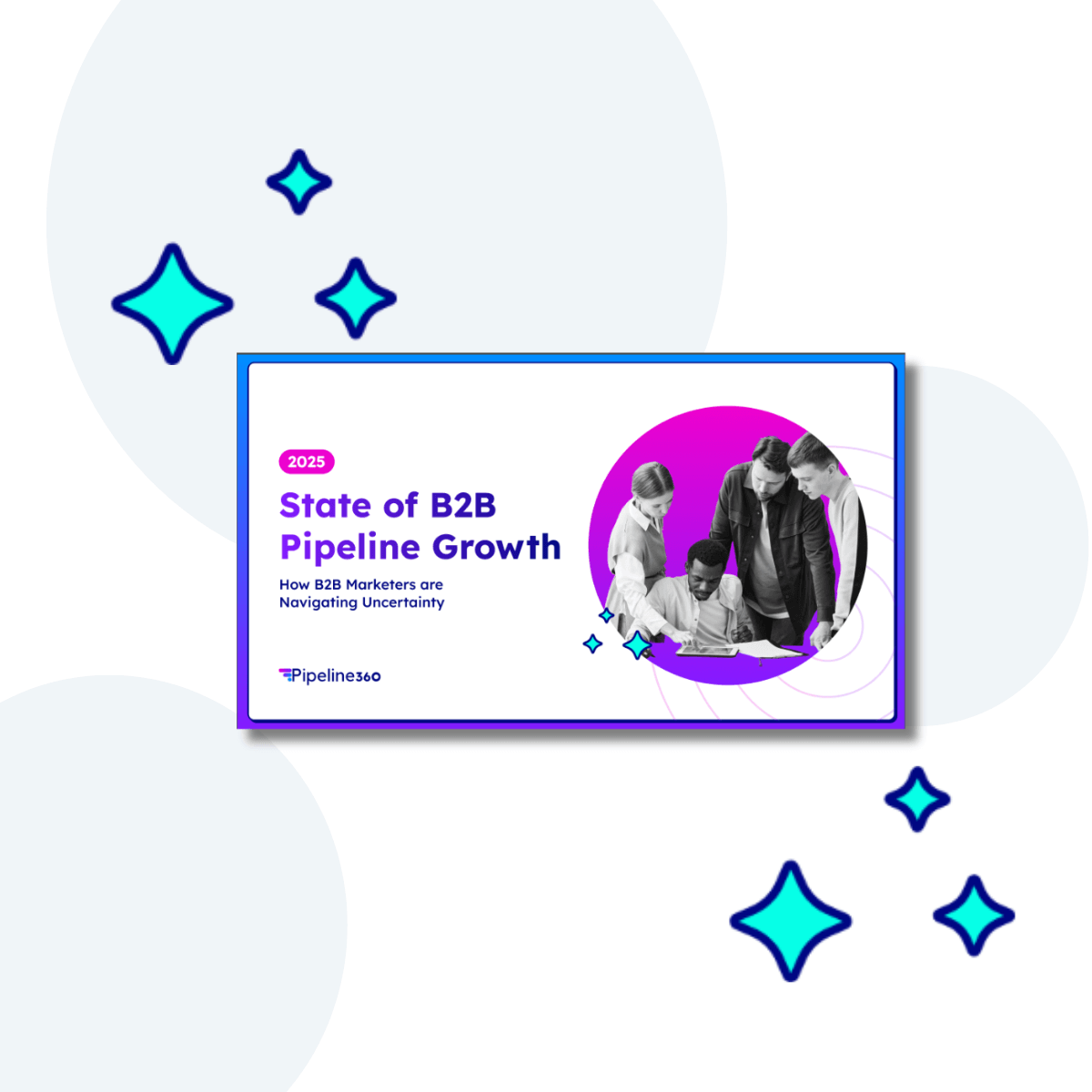B2B marketers are running out of fuel. They’re strapped for budget and resources yet expected to reach ever increasing targets.
In fact, Pipeline360, in collaboration with Demand Metric, recently conducted a survey of 400+ B2B marketers in North America and the UK on “The State of B2B Pipeline Growth,” and found that 1 out of 2 B2B marketers say cuts to budgets, headcount, and resources are their biggest challenge. Meanwhile, 53% of B2B marketers say they can’t reach their pipeline goals.
In addition to ongoing economic headwinds affecting financial constraints, the rise of a digital-first world has fundamentally changed the way businesses operate. Gone are the days when a B2B sale could be closed over a round of golf or a fancy dinner. Today, buyers have access to an endless amount of information and are more empowered than ever before in the decision-making process. This has led to longer sales cycles and increased competition for securing qualified leads. Forrester reports that 70-80% of every B2B purchase process is done before a buyer even engages with a sales rep. Not to mention the increasing complexity of buying groups, which have swelled to 6-10 (or more) decision makers.
Navigating today’s new reality requires shifting gears toward a more strategic, full-funnel Branded Demand approach. This means building trust and connecting with your customer, ensuring brand and demand work hand-in-hand, and measuring meaningful metrics to fine-tune your approach.
B2B growth strategies for building trust & connecting
At its core, B2B marketing is about connecting with real people who have real pain points that your product or service can solve. And to effectively reach these potential customers, you need to understand them on a human level.
It’s about building trust with your customers and establishing a relationship that goes beyond a one-time sale. But how do you build trust with someone you have never met? The answer lies in creating valuable content that addresses their pain points and offers solutions. This could be in the form of informative blog posts, whitepapers, case studies, or webinars. And then distributing your content widely via content syndication channels to maximize your reach.
By providing helpful and relevant information to your target audience, you are showing them that you understand their challenges and are committed to helping them overcome them. This builds credibility and establishes your brand as a thought leader in the industry.
The convergence of brand and demand
But it’s not just about creating and distributing valuable content. In today’s world, Marketing’s role is to surface high-quality leads through a combination of targeted display (top of the funnel) and content syndication (middle and bottom of the funnel). Having this brand awareness makes it easier for Sales to engage with prospective customers and shifts Sales teams to a more value-added role where they can provide additional content and resources toward a reason to buy, instead of constantly pushing for meetings and demos.
This integration of targeted display and content syndication forms what I consider the “Holy Grail” of Branded Demand. Aligning brand awareness with lead generation ensures that when Sales engages, potential clients are already familiar with the brand. This shift from constant pushing for meetings to a more supportive role allows Sales teams to provide additional content, acknowledging the changing dynamics of the buyer’s journey.
Measuring what matters for B2B growth
Every B2B marketer knows the value of measurement and the ability to defend their spend to their CFO. Measuring an integrated approach is critical, as it allows you to see how brand awareness and demand efforts can work together and nurture leads through the funnel. It can help you understand what to do more of and what to do less of.
For instance, if your prospective customers are not inclined to attend webinars and instead like to interact on social, shift your resources toward paid and organic social, and activate your Sales teams on social selling. Arm your Sales teams with the right kinds of content across channels so they can build trust and credibility with potential clients before even reaching out for a meeting or demo. This ultimately leads to a higher conversion rate and shorter sales cycle.
Driving B2B marketing forward
Marketers need a more strategic, holistic demand generation approach tailored for the reality of today’s B2B purchasing process. They need a model that ensures that marketing efforts are impactful and visible from the early stages of buyer interest, through consideration to purchase.
Just as a car needs to shift gears for optimal performance, B2B marketing requires adapting strategies to align with changing market dynamics and customer needs. It’s time to fill up the tank and hit the road toward Branded Demand.




